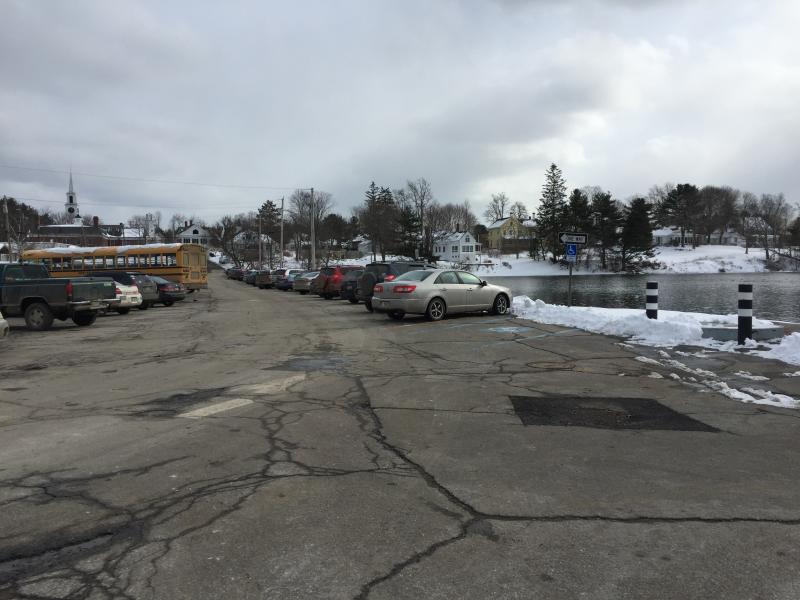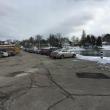Environmental tests to be performed at Damariscotta parking lot
 The Damariscotta municipal parking lot will be the subject of contaminant testing on Wednesday, Feb. 17 and Thursday, Feb. 18, weather permitting.
The Damariscotta municipal parking lot will be the subject of contaminant testing on Wednesday, Feb. 17 and Thursday, Feb. 18, weather permitting.
 The Damariscotta municipal parking lot will be the subject of contaminant testing on Wednesday, Feb. 17 and Thursday, Feb. 18, weather permitting.
The Damariscotta municipal parking lot will be the subject of contaminant testing on Wednesday, Feb. 17 and Thursday, Feb. 18, weather permitting.
Ransom Consulting will be conducting tests of the subsurface soil at the Damariscotta municipal parking lot between Main Street and the waterfront on Feb. 17 and 18.
Eight bore holes will be drilled in different areas of the lot, which may lead to the loss of parking spaces during the two-day testing.
According to Kathyrn Quay, project manager at Ransom Consulting, the tests are looking for volatile organic compounds, such as might have been found in certain paints during boat repair, which was done historically on part of the site.
The Irving gas station on Main Street had some leakage in the past, as did a filling station located where the Mediterranean Kitchen is now sited, so the company will also be looking for petroleum contamination, Town Manager Matt Lutkus said.
The bores will also test for metals such as arsenic and lead that were byproducts of prior uses of the site, Quay said. The results are expected to be returned within a couple of months.
There will be no exposure of the subsurface, and there is no danger to the public during the process, Quay said. As soon as the samples are taken, the bore holes will be patched back up.
The testing is necessary because of planned future improvements to the parking lot as part of the greater waterfront capital improvement plan.
“It’s the largest project I’ve worked on since I’ve been here, and possibly the largest capital improvement program the town of Damariscotta has ever undertaken,” Lutkus said.
The project is the Shore and Harbor project, which will address flooding and sea level rise in the low-lying area near the waterfront.
The parking lot, constructed on fill dating from the Route 1 bypass project from the late ’50s, was built with an agreement that if the town ever decided to stop using the land as a parking lot, ownership would revert back to the then-owners of the businesses of the waterfront side of Main Street. However, the town ultimately obtained ownership of the land by negotiating with each owner, and that opened the door for other uses of the area.
A bit later, the town underwent a discussion of how to best use the area. By mid-2000, about 700 citizens of Damariscotta, under the direction of a facilitator, decided that they would like to see the parking lot area redeveloped, by adding amenities such as a boardwalk, a restroom, more pedestrian access, and a transportation center, which would have been located at the mud flat known locally as “Misery Gulch.” In addition, the town wanted to see the parking lot fixed up and repaved.
This was the recommendation of the Shore and Harbor Study, that was released in 2010. Damariscotta applied for a fairly long-shot federal grant in 2013, but didn’t receive it, and the project was essentially shelved.
“In the meantime, more information was coming out about the flood hazard in the region, and the new FEMA flood maps were released. While the parking lot and some of Main Street is technically in a 1 percent flood hazard zone (previously known as a hundred-year flood zone), the fact was that Damariscotta was suffering 1 percent floods regularly, and the cost of flood insurance was going to skyrocket,” Lutkus said.
Several businesses weren’t alarmed by this, because they owned the building and felt they could do without flood insurance, but flood insurance is a requirement in flood zones if the property is ever sold, which could make some of the properties either not affordable or undesirable.
Damariscotta discovered that by improving the lot and some of the adjacent properties, elevating them and building a sea wall, they could ask FEMA to revisit the flood designation, and save property owners a fortune in the process.
A survey held recently showed that the majority of citizens still favored fixing the parking lot, building restrooms, and improving pedestrian access.
“Those were the priorities,” Lutkus said. “The boardwalk would be nice, but it was an extra. About 50 percent still want the boardwalk, especially if it can be done with private funds.”
The proposed boardwalk now, on the waterfront of the parking lot, would look like half a keel of the largest clipper ship ever built in Damariscotta, the 256-foot Ocean Herald. “It would cost somewhere between $960,000 and a million dollars,” Lutkus said. “So it may wait a while. The rest of the project we’d like to begin moving on, but we need some funds to do it.”
The remainder of the project would cost about $2.8 million. “Other towns have been successful in getting grants from the Army Corps of Engineers for flood control,” Lutkus said. “There are also possibilities of getting funds from FEMA, the Environmental Protection Agency, the State Department of Environmental Protection, and a few other sources.”
The savings for getting the FEMA flood map revised, to individuals and to the town itself, are enormous, however. “You can’t sell a property with a mortgage in the floodplain without flood insurance,” he said. “If things stay as they are, some buildings downtown may never be able to be sold.”
Event Date
Address
United States






















